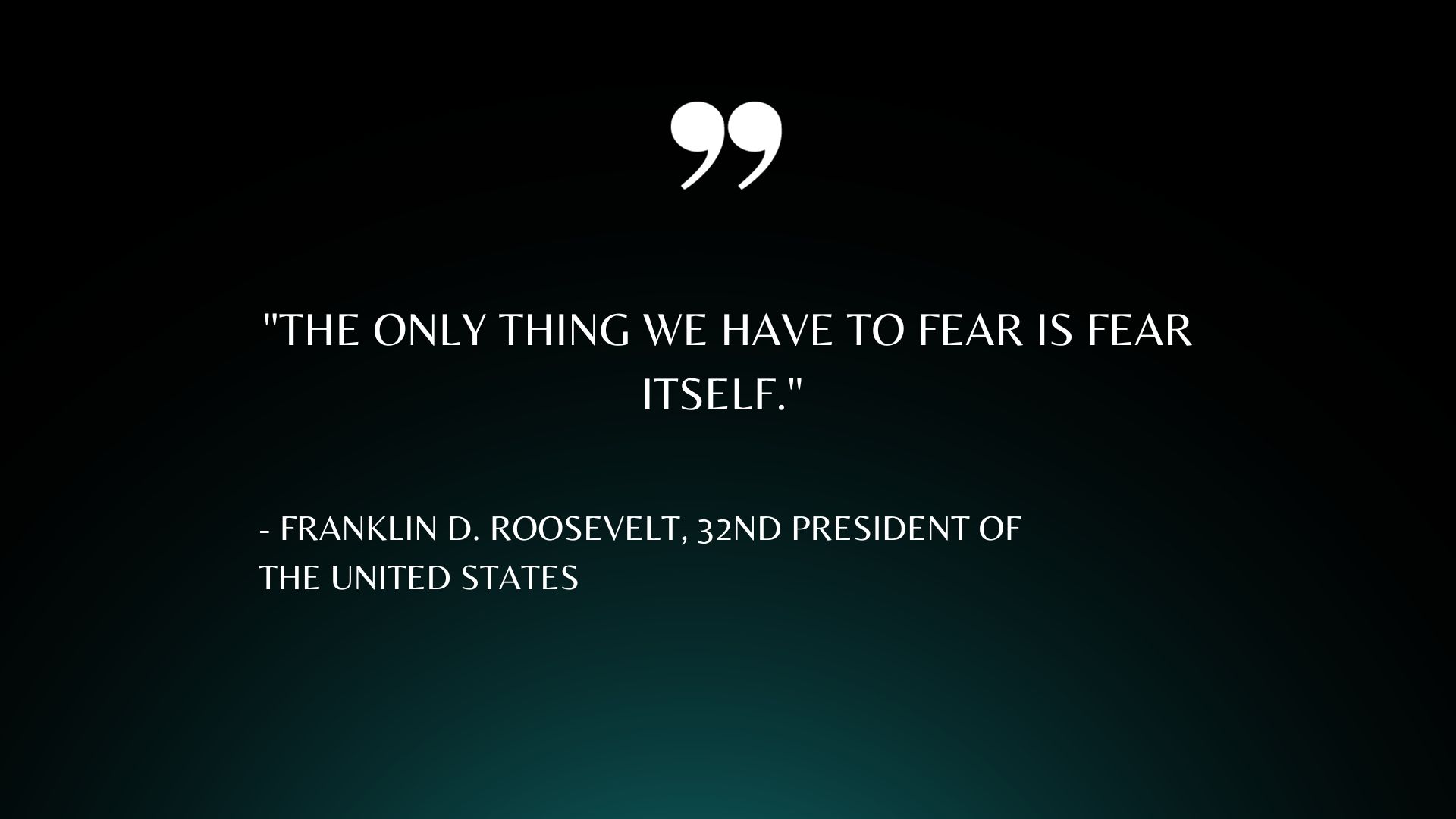“The only thing we have to fear is fear itself.”
– Franklin D. Roosevelt, 32nd President of the United States
Explanation:
Franklin D. Roosevelt, the 32nd President of the United States, famously stated, “The only thing we have to fear is fear itself.” This quote has endured through the years, serving as an inspiration for countless individuals to confront their fears and overcome adversity. In this analysis, we shall delve into the significance of this quote, exploring its deeper meanings and examining a real-life example.
I. The Nature of Fear
1.1 Defining Fear:
Fear is a powerful emotion that stems from the anticipation of imminent danger or harm. It is a primal instinct that can immobilize individuals, preventing them from fulfilling their potential.
1.2 Fear as a Perceived Threat:
Fear often arises from an imagined outcome rather than an actual danger. It can manifest through the lens of uncertainty, conditioning individuals to anticipate negative consequences before they occur.
II. The Paralysis of Fear
2.1 Inhibiting Personal Growth:
Fear has the potential to hinder personal growth, as individuals may become hesitant to take risks or step outside their comfort zones due to the perceived possibility of failure or judgment.
2.2 Obstructing Decision-Making:
Fear can cloud judgment and impede decision-making processes. It can cause individuals to focus on worst-case scenarios, leading to indecision and missed opportunities.
III. Embracing Fearlessness
3.1 Overcoming Internal Barriers:
Roosevelt’s quote reminds us that the most significant obstacle in life is often our own fear. By acknowledging this, individuals can start to address their fears head-on and develop strategies to conquer them.
3.2 Building Resilience:
The ability to confront our fears helps us become more resilient. As we face challenges, we gain confidence, learn from our experiences, and cultivate the strength to overcome future obstacles.
IV. Real-Life Example: Rosa Parks
4.1 The Historical Context:
Rosa Parks, a civil rights activist, exemplified Roosevelt’s quote through her courageous actions in Montgomery, Alabama, in 1955. In an era of rampant racial discrimination, Parks refused to give up her seat on a segregated bus, despite facing potential danger and backlash.
4.2 Confronting Fear:
Parks chose to confront her fear of retaliation and the risk of physical harm by defying unjust laws. Her bravery ignited a movement that led to significant advancements in the civil rights movement.
4.3 Inspiring Change:
Parks’ unwavering resolve and refusal to succumb to fear inspired countless others to stand up against oppression. Her actions serve as a reminder that fear can be conquered and that even small acts of defiance can have far-reaching effects.
Conclusion:
Franklin D. Roosevelt’s quote, “The only thing we have to fear is fear itself,” encapsulates the profound impact of fear on individuals and societies. By recognizing fear as an internal barrier and actively working to overcome it, we can embark on a path of personal growth, resilience, and positive change. The story of Rosa Parks exemplifies the transformative power of fearlessness, reminding us that we possess the ability to transcend our fears, defy injustice, and shape a brighter future.




